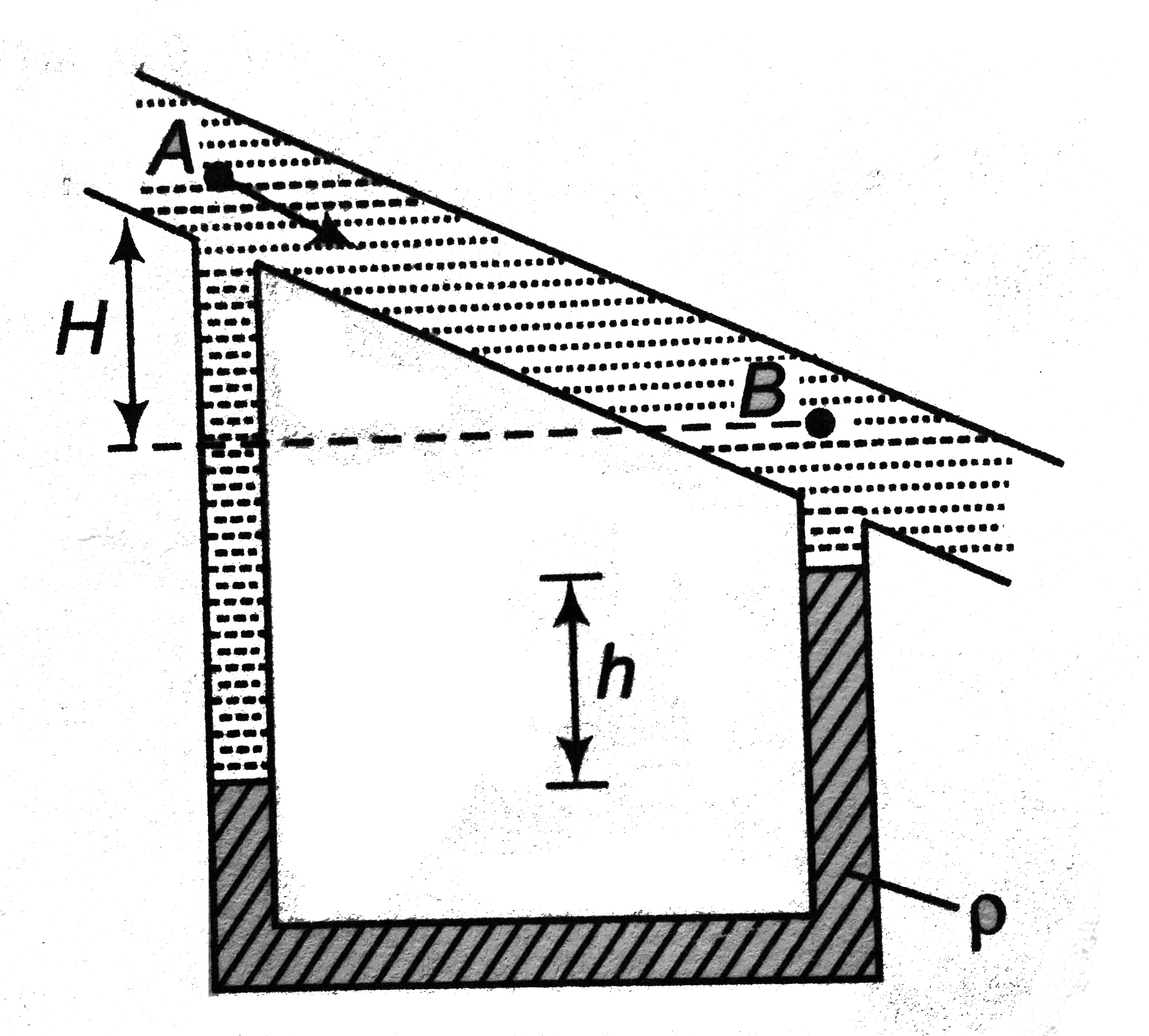Describe the working of an open end manometer.
Step-by-Step Solution: Working of an Open-End Manometer
1. Definition of a Manometer:
- A manometer is a device used to measure the pressure of a gas in a container. It is similar to a barometer, which measures atmospheric pressure.
2. Open-End Manometer Description:
- An open-end manometer consists of a U-shaped tube filled with a liquid (commonly mercury or water). One end of the tube is open to the atmosphere, while the other end is connected to the gas container whose pressure is to be measured.
3. Understanding the Setup:
- In the open-end manometer, the liquid levels in the two arms of the U-tube will differ due to the pressure exerted by the gas in the container and the atmospheric pressure.
4. Pressure Measurement:
- The difference in height (h) between the liquid levels in the two arms of the manometer corresponds to the difference in pressure between the gas in the container and the atmospheric pressure.
- If the gas pressure is greater than atmospheric pressure, the liquid level will be lower in the arm connected to the gas container and higher in the open arm.
5. Mathematical Relation:
- The relationship between the gas pressure (P_gas), atmospheric pressure (P_atm), and the height difference (h) can be expressed as:
Pgas=Patm+hρg
- Here, ρ is the density of the liquid in the manometer, and g is the acceleration due to gravity.
6. Conclusion:
- Thus, the open-end manometer allows for the measurement of gas pressure by comparing it to atmospheric pressure, using the height difference of the liquid column.
- A manometer is a device used to measure the pressure of a gas in a container. It is similar to a barometer, which measures atmospheric pressure.
- An open-end manometer consists of a U-shaped tube filled with a liquid (commonly mercury or water). One end of the tube is open to the atmosphere, while the other end is connected to the gas container whose pressure is to be measured.
- In the open-end manometer, the liquid levels in the two arms of the U-tube will differ due to the pressure exerted by the gas in the container and the atmospheric pressure.
- The difference in height (h) between the liquid levels in the two arms of the manometer corresponds to the difference in pressure between the gas in the container and the atmospheric pressure.
- If the gas pressure is greater than atmospheric pressure, the liquid level will be lower in the arm connected to the gas container and higher in the open arm.
- The relationship between the gas pressure (P_gas), atmospheric pressure (P_atm), and the height difference (h) can be expressed as:
Pgas=Patm+hρg
- Here, ρ is the density of the liquid in the manometer, and g is the acceleration due to gravity.
- Thus, the open-end manometer allows for the measurement of gas pressure by comparing it to atmospheric pressure, using the height difference of the liquid column.
Topper's Solved these Questions
- STATES OF MATTER : GASES AND LIQUIDSBOOK - ICSECHAPTER - STATES OF MATTER : GASES AND LIQUIDSEXERCISE - ESSAY (LONG ANSWER ) TYPE QUESTIONS
10 Videos
- STATES OF MATTER : GASES AND LIQUIDSBOOK - ICSECHAPTER - STATES OF MATTER : GASES AND LIQUIDSEXERCISE - OBJECTIVE (MULTIPLE CHOICE) TYPE QUESTIONS
49 Videos
- STATES OF MATTER : GASES AND LIQUIDSBOOK - ICSECHAPTER - STATES OF MATTER : GASES AND LIQUIDSEXERCISE - VERY SHORT ANSWER TYPE QUESTIONS
20 Videos
- SOME P-BLOCK ELEMENTS BOOK - ICSECHAPTER - SOME P-BLOCK ELEMENTS EXERCISE - NCERT TEXTBOOK EXERCISES (With Hints and Solutions)
63 Videos
- STRUCTURE OF ATOMBOOK - ICSECHAPTER - STRUCTURE OF ATOMEXERCISE - NCERT Textbook Exercises
67 Videos
Similar Questions
Describe the working of an AC generator with the help of a labelled circuit diagram. What changes must be made in the arrangement to convert it to a DC generator?
View SolutionThe difference in the heights of mercury levels in an open end manometer connected to a gas chamber is found to be 175 mm. If the height of mercury level in the smaller limb is more as compared to that in the longer limb and the atmospheric pressure is 755 mm, what is the pressure of the gas ?
View Solution
Knowledge Check
Describe the principle, construction and working of an AC generator.
Amagaetic effect of currentBheating effect of currentCchemical effect of currentDelectromagnetic induction
The figure shown a pipe of uniform cross-section inclined in a vertical plane. A U-tube manometer is connected between the point A and B. If the liquid of density ρ0 flows with velocity v0 in the pipe. Then the reading h of the manometer is

View SolutionA gas is filled into a bulb connected to an open limb manometer. The level of mercury in the open arm is 2.1 cm lower than that in the other arm of the manometer. The atmospheric pressure is 740 mm. What is the pressure of the gas?
View SolutionA manometer connected to a closed tap reads 4.5×105 pascal. When the tap is opened the reading of the manometer falls is 4×105 pascal. Then the velocity of flow of water is
View SolutionDescribe principle and working of the periscope.
View SolutionThe difference in the heights of mercury columns in a closed end manometer connected to a gas container is found to be 15 cm. What is the pressure of the gas in terms of Pa ?
View SolutionA glass bulb is connected to an open-limb manometer. The level of mercury on both limbs was same. The bulb was heated to 57∘C. If the room temperature and atmospheric pressure are 27∘C and 750 mmHg, the difference of levels in the two limbs now will be
View SolutionIf we study the vibration of a pipe open at both ends, then the following statements is not true
View Solution
